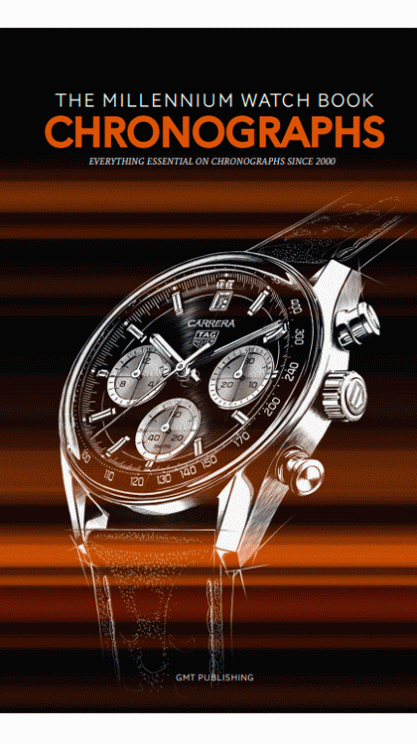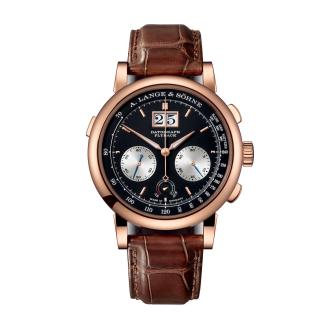ASHES AND GOLD
Just to make things clear from the outset, the Datograph is one of those dream watches of mine that I don’t believe I’ll ever be fortunate enough to own. During my travels as a collector, I’ve had the privilege of holding the Datograph — and of slipping it onto my wrist — several times. My attraction to this timepiece has never waned.
What I find simply irresistible in this chronograph is the quasi-Faustian alchemy and magic that makes the timepiece something really special. The Datograph is first and foremost the product of a brand and a story that began in the mid-19th century in Eastern Europe, in the town of Glashütte in the Kingdom of Saxony.
Glashütte is the cradle of German watchmaking and has been home to many brands. Located in former East Germany, the town has been hugely affected by history, as has A.Lange & Söhne, a local firm that enjoyed healthy growth until it went out of business in the early 1950s. During the course of its existence, it originally specialised in luxury watches, went on to produce military watches, was then nationalised under the East German regime — and finally went out of business amid general indifference.
It was not until the fall of the Berlin Wall in 1989 that A.Lange & Söhne came back to life. A few months after the wall came down, the Manufacture was reborn. That was in 1990. Four years after that, the first ‘new’ Lange & Söhne emerged from the Glashütte workshops. There were in fact four distinct watches, including the acclaimed original Lange 1 and the incredible Tourbillon pour le Mérite. In 1999 came the turn of the outstanding Datograph to emerge.

THE BEWITCHING OF FAUST
There’s something about the Datograph that reminds me of the infamous alchemist accused of witchcraft and of having made a deal with the devil.
When you look at the watch and go over the various components on its dial and case one by one, it’s apparent that none of them are supposed to go well together: a large date display at 12 o’clock that makes you wonder what it’s doing there, off-centred chronograph dials near the bottom, rectangular yet rounded pushers (one of them at 10 o’clock), a solid case, both Arabic and Roman numerals for the chronograph, and so on.
In short, seen thus the Datograph is a watch with no harmony at all. And that’s precisely where the Faustian magic begins. A.Lange & Söhne’s watchmakers and designers pulled off an amazing exploit by combining all of these elements.
The Datograph is an extremely well-balanced timepiece that wins people over with its discreet originality, other-worldly finishes and addictive refinement.
In summary, the Datograph is enchanting. And the magic doesn’t end there. Let’s get back to the watch itself.
‘A REVOLT?’ ‘NO, SIRE, A REVOLUTION!’
The Datograph is nothing less than a revolution. In the early 1990s, at a time when many prestigious brands were still using white-label movements, the Datograph came along with an incredible in-house calibre. Not being a watchmaker, I’m not qualified to go into detail about it, but I can describe the way I felt the first time I was able to hold the timepiece in my hands and admire the movement: I was speechless, and I remember a smile coming to my lips…
The Datograph was simply a confirmation — and a reinforcement — of how successful the original wager of those who relaunched the brand had been. At that time, there was still room in the watchmaking world to create a fine watchmaking brand and impress even the most jaded of collectors.
The 1999 Datograph lived on until 2012, when the Datograph Up & Down was unveiled — a more imposing timepiece that did away with the Roman numerals.

THE END OF A QUEST?
Some collectors see the Datograph as the absolute watch: the end of their quest for perfection. I’m not sure whether that’s true, but I can easily understand their point of view.
A. Lange & Söhne had said as much in 1999 in its first advertisement for the Datograph: “What will you never be able to offer someone who owns a Datograph?” The ad concluded with the words “A more exciting view” — accompanied by a black and white photo of the movement.
A. Lange & Söhne Datograph (Ref. 403.031)
CASE: rose gold
DIMENSIONS: 40mm diameter, 11.3mm thick
MOVEMENT: hand-wound mechanical L951.1 calibre, 405 components, 36-hour power reserve
FUNCTIONS: hours, minutes, flyback chronograph, large date display
DIAL: black
STRAP: crocodile leather
LAUNCH YEAR: 2003 (original 1999)
This year GMT Magazine and WorldTempus have embarked on the ambitious project of summarising the chronograph since the year 2000 in The Millennium Watch Book - Chronographs, a big, beautifully laid out coffee table book. This article is an extract. The Millennium Watch Book - Chronographs is available in both French and English here.









